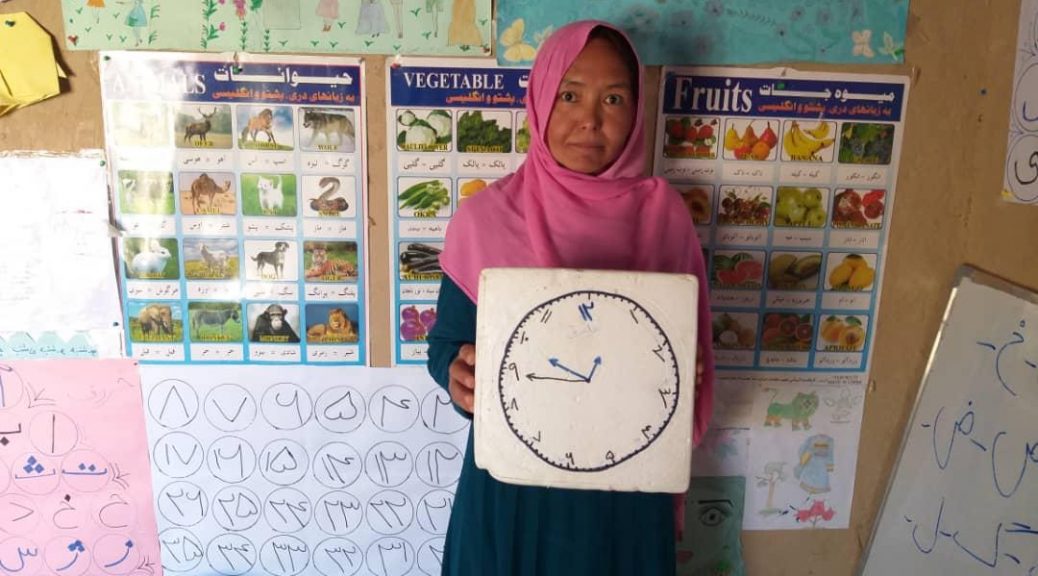The relativity of time from the perspective of remote communities living in the mountainous regions of central Afghanistan
What is time? In western and westernized societies, time is measured by a clock. From early youth to old age, our agendas are filled with time-related commitments and appointments; daily life is governed by attendance required for school, study or work, sports, artistic activities, leisure, social events. Days, months, or years cannot be thought of without a very clear definition of time.
In the mountainous regions of central Afghanistan, time is a different reality. The rhythm of the sun, the cycles of the moon, the succession of seasons, the needs of the livestock or the fields, and the calls for prayer give the pace of life. But time becomes complex to manage when preschool arrives in these remote areas.
Preschool classes are held on weekdays with regular timing. Children are expected to arrive a few minutes before class starts. Teachers are always present at least 30 minutes before the start of the lesson, making sure that everything is ready to welcome their young students. However, the teacher is often surprised to see children waiting outside the door long before she arrives for class. Similarly, it is not uncommon for children to join the class just as it is about to end or to fall asleep during a lesson.
Changing from sophisticated to handmade dial clocks
Classrooms are generally equipped with dial clocks; they usually hang at the top of the wall, just below the ceiling as an untouchable ornament for children. These clocks help teachers organize their teaching day since their own watches are mostly used as fashion accessories as they do not have batteries that work. The dial clock also serves as a support for children to learn to tell time, which they do carefully: they can accurately say, “It’s half past nine,” “It’s a quarter to three,” but when asked what time they are supposed to get ready for school, they usually reply, “When the sun comes up”; there is no connection to the clock.
When assessing what equipment was most and least useful in the classroom, the preschool coordinators unanimously answered the dial clock.
The preschool classrooms that have recently opened no longer have battery-operated dial clocks, but instead decorative cardboard clocks made by the teachers. The children can touch them and play with them, without fear of breaking them. Telling the time is taught in a more practical way, by linking time to daily life activities. Children sing a rhyme that describes the different moments of their daily routine and which they can link with time: “I wake up, I wash my face and ask my mom for tea and after I get ready and walk to class…” Teachers give life and meaning to time by linking the clock and mealtimes so that children are able to ask their busy parents for food. Children are more aware of the clock in their daily routines. In other words, teachers give “life” and meaning to time.
The children and the preschool teachers tell the parents their schedule for preschool, or at what time the children need to wake up or get ready for school. Most parents own a cellphone with a clock and their children teach them to use the time correctly. Moreover, they no longer wake their children hours before leaving for school, children no longer fall asleep during preschool and are ready for the start of class. Children kindly remind their mothers it is time to get food so that parents who are always busy do not forget to feed them as is often the case.
The installation of cardboard clocks in the classes has exceeded all expectations in bringing a healthy routine to their lives.

